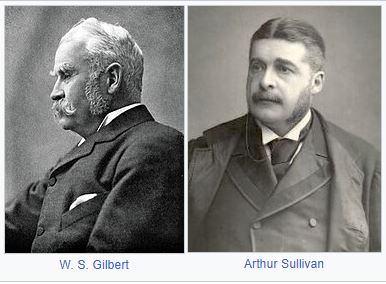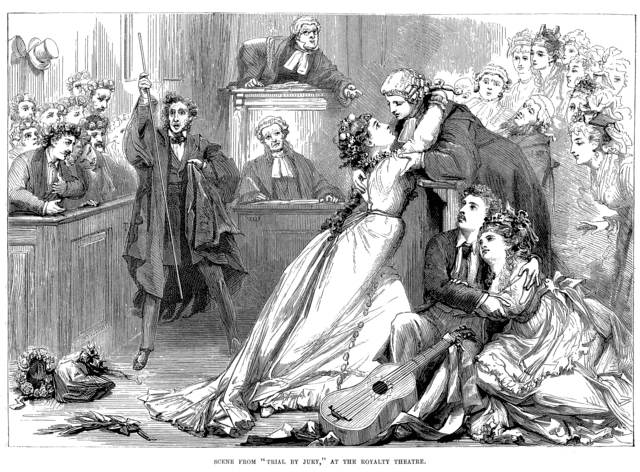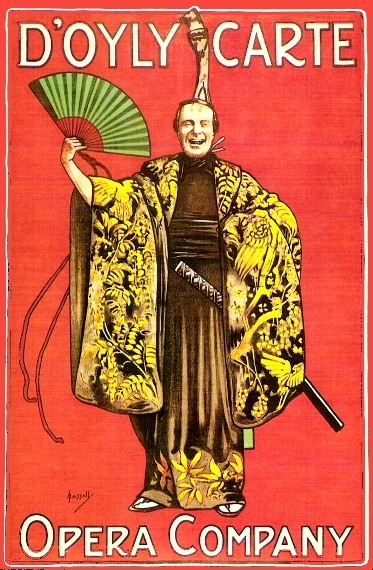Why Gilbert & Sullivan Still Make Us Laugh (& Sing) 150 Years Later
Alexandra Appleton | Last updated: October 23, 2024
There’s something undeniably charming about Gilbert & Sullivan. Their operettas, those delightful blends of witty dialogue, catchy melodies, and delightfully absurd situations, have been captivating audiences for over 150 years. But what is it about these Victorian-era productions that continues to resonate with modern audiences?
Let's delve into the world of Gilbert & Sullivan and uncover the secrets behind their lasting appeal.

[PD-US]
A Match Made in Musical Heaven
The story of Gilbert & Sullivan begins with a partnership that was destined to create something extraordinary. William Schwenk Gilbert, a brilliant playwright known for his satirical wit and clever wordplay, met Arthur Seymour Sullivan, a gifted composer with a knack for writing memorable tunes. Their collaboration began in 1871 with the production of the operatic extravaganza Thespis and blossomed into a string of iconic operettas that took the world by storm.
A Victorian World Turned Upside Down
After the success of Thespis, the dynamic duo then went their separate ways for the next few years until they were brought together once more by theatre manager and impresario, Richard D’Oyly Carte.

[Illustrated Sporting and Dramatic News, PD-US]
The duo’s first major success, Trial by Jury, premiered in 1875 and set the stage for a string of unforgettable hits. 14 to be precise, popularly known as the Savoy Operas! Here are just a few of the operettas that continue to enchant audiences today:
- The Pirates of Penzance (1879): This charming tale of a handsome young man who has been mistakenly apprenticed to a pirate (instead of a pilot) is packed with hilarious situations, catchy tunes, and a heartwarming romance. And don't forget that it features one of the most famous Gilbert and Sullivan patter songs, "I Am the Very Model of a Modern Major-General"!
- The Mikado (1885): Set in a whimsical version of Japan, this operetta satirizes English bureaucracy and features a delightful cast of characters, including the Mikado himself, a lovable and slightly eccentric ruler.
- H.M.S. Pinafore (1878): This nautical adventure with a social conscience explores themes of social class and the absurdity of hierarchy. The famous song "I'm Called Little Buttercup" is a sure-fire crowd-pleaser.
- The Gondoliers (1889): Their twelfth collaboration tells the story of two charming Venetian gondoliers, Giuseppe and Marco who discover that one of them is the heir to the throne of Barataria. But which of them is it? It has continued to delight audiences with its memorable score by Sullivan, and its political satire, cleverly tucked into Gilbert’s witty plot line.
Their Success in the Late Nineteenth Century
Gilbert & Sullivan enjoyed phenomenal success in the late nineteenth century. Their operettas were wildly popular, selling out theatres and captivating audiences across the globe. They became a cultural phenomenon, and their music and stories permeated society. The operettas were a breath of fresh air in the stuffy Victorian era. They poked fun at social conventions, lampooned the upper class, and celebrated the wit and charm of the common man. The characters, often eccentric and larger-than-life, provided ample opportunities for comedic situations and biting social commentary.
The D’Oyly Carte Opera Company
The success of Gilbert & Sullivan's first international hit, H.M.S. Pinafore, led to the formation of the D’Oyly Carte Opera Company, specifically dedicated to performing their works. D’Oyly Carte was a man on a mission to develop a respectable English form of comic opera to rival that of the French. The company toured extensively throughout the British Isles and beyond, bringing the unique charm of Gilbert & Sullivan to audiences worldwide. In fact, the company continued to thrive throughout much of the twentieth century, only closing its doors in 1982!

[Illustration by J. Hassal. PD-US]
The Savoy Theatre
In 1881, during the run of Patience, D’Oyly Carte built the Savoy Theatre, the first public building in the world to be lit entirely by electricity. Iolanthe became one of the first ever productions to use electricity in its original staging, enabling special effects such as sparkling magic wands for the chorus of fairies. This iconic venue became synonymous with Gilbert & Sullivan and served as a home for their productions for many years.
Revivals and Reinterpretations
Gilbert & Sullivan's collaboration ultimately came to a bitter end, with the men falling out and refusing to speak to each other after 1898. However, their work lives on and has seen countless revivals and reinterpretations over the years. These productions demonstrate the enduring power of their music and stories. From traditional stagings to more modern interpretations, the appeal of Gilbert & Sullivan continues to captivate audiences across generations.
So What's the Secret Sauce?
But what is it about Gilbert & Sullivan that still resonates with us today? Here are a few key reasons:
- Timeless Humor: Their wit is sharp and clever, often poking fun at human nature in ways that remain relevant across generations.
- Memorable Music: Sullivan's melodies are catchy and unforgettable, with a whimsical charm that's impossible to resist. And their fast-paced, tongue-twisting patter songs are a delight to perform!
- Compelling Characters: The characters in Gilbert & Sullivan's operettas are often quirky and lovable, with personalities that are both relatable and entertaining.
- A Touch of the Absurd: Their operettas embrace the absurdity of life, creating a world where anything is possible.
Gilbert & Sullivan's operettas offer a delightful escape from the everyday, a chance to laugh at ourselves and the world around us, and a reminder that even in the face of social conventions, there's always room for a good dose of silliness and charm.
Last Updated: October 23, 2024

Alexandra Appleton
Writer, editor and theatre researcher